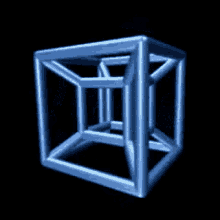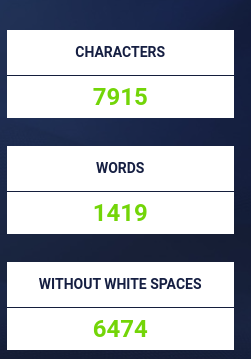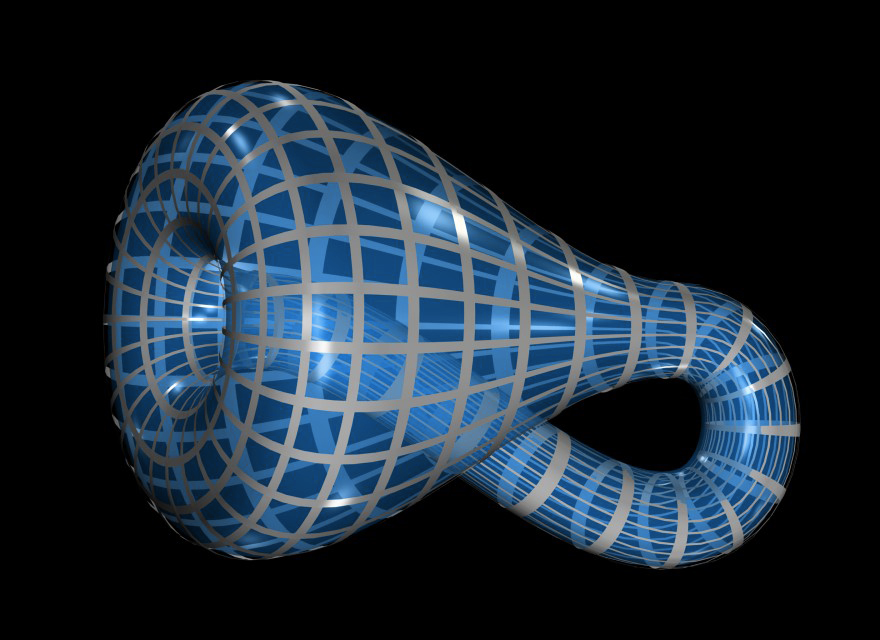Ted Talk About Numbers, Dimensions and Space :D
-
I just love everything numbers, space, scientific concepts and dimensional thinking. It’s easy to overlook all of this, since it wouldn’t seem interesting at first glance and could eventually get boring, but nonetheless I would like to share with you what interesting concepts I’ve gathered over time, about our very own reality, as well as a few fun facts that will leave you thinking even more about the perspectives of our universe! If you’re willing to learn with me, I thank you. I just want this out there for anyone to find, and learn for themselves the elegant aspects that are meant to be known. Welcome to my discussion! <3
NUMBERS
Firstly, I want to talk about numbers. Numbers, in relation to our universe, when compared to our own knowledge here on Earth, is UNIMAGINABLY vast and hard to grasp. What is the biggest number you can think of? Many people would likely say infinity. Let me clarify some things: “Infinity” is not a number - it is but a concept/term we use to describe how many numbers there are on the physical number line. There are actually different types of Infinity, and I will talk about two of them.Countable Infinity - This term is what we are all familiar with when we just casually name off the numbers, like so: 1, 2, 3, 4, 5…and so on. We are able to count these consecutively one after another, therefore calling this a countable set. This concept is infinitely long, but it’s still finite because we are able to start at some point and count off the next number.
Uncountable Infinity - Now this is very interesting. So, like earlier, we had listed an example of a set of numbers that were classified as a “countable set”. We were able to count one after another. However, lets go back to that numberline and try something different. Let’s just simply list these two numbers: 0 and 1. That’s all. Now, where do we start? Obviously, we should start at 0 because that’s the beginning of the set. But… where do you count to next? It wouldn’t be 1, because we are leaving out what’s in between 0 and 1. Here are some examples of what there could be in that range - 1/2, 0.00986, 0.1… But where do we start? 0.000000…
We can’t even place a “1” anywhere because there are infinitely many zeros that we could theoretically put down after 0. That is crazy!Anyways, numbers are what makes our universe understandable and easy to at least comprehend to some extent the physical amounts of matter. Our universe as we know it, is only observable to some degree. Scientists have calculated that our universe is about 90 billion light years in diameter. Now, the measure of just one single light year is an amazing 6 trillion (6,000,000,000,000) miles. This is going to get ridiculously big, but for the sake of identification, our own universe, according to these calculations, would be 5.4 × 10^23, or 5,400,000,000,000,000,000,000,000 (5 septillion miles) long. It would take longer to walk from one side to the other than the actual age of our universe. Let alone the amount of space atoms take up - the universe contains an insane 10^83 atoms, or a 1 with 83 zeros.
We’ve been talking BIG, but now let’s talk SMALL.
What is the smallest thing you can think of? A dust particle, an atom, a quark? Actually, if we wanted to know what the smallest thing is, actually the smallest possible thing, it would be in the realm of the Plank realm; more precisely, the Plank Length. This is seriously small - you have no idea! XD
At 1.6 × 10^-35 meters in size, this amount of distance is so small, if the ENTIRE MILKY WAY GALAXY was the size of an atom, the Plank Length would be about the size of the head of a pin. Back at the regular atom scale, about a quadrillion (1,000,000,000,000,000) Plank Lengths would fit across a single Hydrogen atom.
Now, there isn’t really much we can do at this scale. If we were to get even smaller, science and physics would just, fall apart. Nothing would make sense. Things have to have a limit in our universe for them to make sense.
Once again, in comparison, if we were to scale that distance up to the size of a tennis ball, a regular American penny would be hundreds of thousands times bigger than our universe.In relation to the Plank Length, another cool fact is the number we’ve probably heard of as a “Googol Plex”, or a Googol raised to the Googol power (10^100^10^100)
It wouldn’t be possible to manually write down this number - It would exhaust all of the matter in the universe in doing so. You would need more books to write this down than there is matter in the universe, so just give up, haha! XD
The character “0”, if scaled down to fit in the area of a Plank Length, would be no match compared to a google plex, even if you wrote down zeros that small. This concept of “Google Plex” is bigger than our physical universe in terms of spacial area. In order to get to that number, we’d have to fill the entire observable universe with grains of sand, 100,000 times over!!DIMENSIONS
Alrighty. We live in a 3rd-dimensional world as we know it. This is the dimension we all came to know and live in. We don’t think it’s all that weird, right? We have the advantage of traveling through the X, Y and Z axix, otherwise known as 3D.
If we were living in 2 dimensions, we would only be capable of traveling left and right (X, Y) not up or down, sadly (Z).
These aspects are what exist in our current understandings. If we were even to imagine higher dimensions, like 4D, 5D, 6D and so on, that would be considered only imaginary to most people. But in fact, we may be living amongst higher dimensions.
I don’t think I can fully explain how to visualize higher dimensions, now that I think about it, but just to get a taste of what a 4D cube would look like, traveling through our 3 dimensional world, it would look something like this:

4D shapes are able to morph through space and time - the movement shown here would be plausible only through our eyes, but no one knows what real 4D things look like, as we only live in 3D.
Dimensions go on basically forever. You could have the 100,000th dimension, 1,000,000th dimension… but that’s just for hypothetical purposes, and mainly just for fun to think about. It can exist though.
I’ll stop with dimensions now, as there isn’t much information to properly show you that would make sense, haha. I’ll leave you be with that mesmerizing picture!THE UNIVERSE
Alas, everything we have ever known, and will ever know, happens within the boundaries we call the Universe. Who knows, there may be multiverses beyond our own - a universe that contains a reality in which Hitler won the war, that Minecraft is real, that the Dinosaurs never went extinct… every single possibility lies within that realm. But we have only one universe to base this off of, and that is ours.
The Big Bang. Was it really a “bang” of matter that happened within an infinitesimally small area? What could have been that, also could have just been an explosion of… space. Darkness. From that darkness, matter would later form into stars, galaxies, planets and so on. So we may be wrong that the Big Bang expelled light, stars and planets all together at the same time.
Our universe, at about 14 billion years old, will soon die from the exhaustion of physical energy left here. This will be known as the “Heat Death of the Universe”. Although we don’t have to worry about that - this will take 100 trillion to a Googol years to happen.There is never enough time to understand the extraordinary events and ideas we ourselves have brought into existence. It just sparks even more curiosity that cannot be withheld. If you’ve taken the time to listen to me, I thank you for learning about what should honestly be taught around the world. And know that you are one of a kind, literally. This will probably pass by you later on, but it means a lot to me that you were here in the first place.
Thank you!
-
Shazz_ oh god its ted
-

damn -
Shazz_ Have you ever heard of a Klein Bottle? It looks like this,

The “spout” may seem to intersect the wider part of the bottle, but that’s just because our observable universe as we know it exists in only 3 dimensions. When the Klein Bottle is viewed with 4 dimensions, you’ll find that the spout does not intersect or penetrate at all whatsoever as it does in our 3-dimensional universe. This is one example of a 4D object, with W, X, Y, and Z plotting points.-.-.-.-.-.-.-.-.-.-.-.-.-.-.-.-.-.-.-.-.-.-.-.-.-.-.-.-.-.-.-.-.-.-.-.-.-.-.-.-.-.-.-.-.-
I’ve been programming for about 7 years now. A couple years ago I took a tutorial of how to code 3-dimensional engines with Scratch, using trigonometry (mainly sine and cosine, as tangent I’ve found is rather unnecessary for and not required).
I to this day still attempt to advance my knowledge frequently with 3D coding. I specialize nowadays in using the Painter’s Algorithm rather than Ray-based algorithms (Raytracing, ray casting, etc.) or “rasterization” when it comes to trigonometric-based 3D projects.
The norm for most 3D games globally nowadays outside of Scratch use the Rasterization method. According to Scratch Wiki,
“It involves splitting a 3D scene into a number of polygons and using various transformation matrices to transform each polygon onto the screen. It will then loop through each pixel on the screen to find what polygon the pixel represents and color it respectively. Scratch is unable to do calculations for each pixel on the screen fast enough, so this technique is not commonly used on Scratch.”
The Painter’s Algorithm, on the other hand, involves creating polygons from the very start one by one, from furthest away first to closest last on the 3D scale. It is very fast, which is why it is used quite frequently for Scratch games.This is an example project, https://scratch.mit.edu/projects/596028256/fullscreen/
If you reading this would like to learn how to code in 3D, feel free to dm me, as I’d be more than happy to teach you : )
-
@YourLocalNerd yall are nerds. (in a good way)
-
@YourLocalNerd Yes! I have heard of that!
Klein bottles have been represented in the 3D world, making them out of glass, and even origami! You can actually make a Klein Bottle out of what are called “Moebius Strips”.
I don’t know how to perform the task, but you can sew two Moebius Strips together, and in doing so will form a Klein Bottle. I know this because I’ve watched one of The Action Lab’s YouTube videos, and dang, I never get bored with him. -
Shazz_ WOW That’s really cool! His new video about the Klein Bottle just got recommended to me today, it’s like YT can read my mind lmao
-
@YourLocalNerd ONLY LOVE CAN HURT LIKE THISSSSSSSSSSSSSSSSSSSSSSSSSSSSSS
-
@YourLocalNerd bish, only love can hurt like this
-
Knox do I gaf?
-
@YourLocalNerd pretty much so
-
Knox How da flippity dippity do you think you can control my fricking mind
-
Shazz_ Wow, wow. Honestly I didn’t know any of that. My mind has been blown
-


L o l
-
that hurt my peanut brain
-
@Thetruepath That hurt my plank length brain .-.
-
@Creati132 @Thetruepath You guys are very smart as it is, haha :)
I like to go into depth about these concepts, considering that I love things having to do with big/small concepts and the Universe - I watch Vsauce often, so that might explain why I’m somewhat obsessed with this kind of thing. -
Shazz_ no I’m not smart trust me. I’ve just been fooling y’all

 ◞ 🎶 If words fail, music speaks! 🎶
◞ 🎶 If words fail, music speaks! 🎶